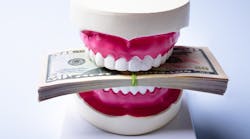We are slowly but surely moving toward a zero marginal cost society. “Marginal cost” is defined as the expense required to create an additional unit of a good or service. Businesses are encouraged to lower their marginal costs as this offers the opportunity to increase profit, lower the price to the customer, or both. In his 2014 book, The Zero Marginal Cost Society, Jeremy Rifkin discusses how the major technological leaps of the late twentieth and early twenty-first centuries—particularly the Internet, the Internet of Things (IoT), and CAD/CAM and 3D printing—have reduced the marginal cost of some goods and services to near zero. This progress has profound consequences on existing businesses, supply chains, and the workforce.1
Let us recall buying music in the early 2000s. There were numerous costs associated with the production of each CD. Initial expenses included recording studio time and a production team. Then came the marginal costs of buying a blank CD, burning data onto it, and packaging it into a jewel case with some printed album artwork. Next, shipping companies had to transport packaged CDs in a box on a truck that burned gasoline and required a driver. Record stores had to employ staff, keep inventory, and pay rent for their space in the local mall. As you can see, incremental costs throughout the supply chain added up to the $19.99 price tag on the latest release from your favorite band.
Today, once an album has been recorded by the artist, it can be sold to customers digitally and directly, thus incurring none of the additional supply chain costs it did in the past. Selling ten thousand albums or one million albums now involves the same additional costs after recording: near zero. Moving toward a zero marginal cost society can create wonderful opportunities for consumers while simultaneously devastating traditional institutions, such as manufacturers and distributors. Technological revolutions are not without their casualties.
We are seeing similar trends within the dental industry. Our profession began a slow march from analog to digital as far back as the 1980s, starting with early prototypes of what would become CEREC. Forty years later, there are practices that are nearly fully digital from diagnosis to restoration insertion. While most of us rely on a hybrid of digital and analog materials, it would be prudent to consider how we will adapt to the digital revolution.
Let’s say you are one of the many dentists who still uses traditional impression material and works with a dental laboratory. You decide to switch from a $200-per-unit lab to a $100-per-unit lab. This second lab has invested in newer technologies and has developed digital workflows that allow them to produce a quality restoration for less money. They have successfully lowered their marginal cost. Since the laboratory industry is competitive, this lab has decided to pass along their savings to their customers—in this case, you—in the form of a lower fee per unit. You have now lowered your marginal cost. Your practice has a choice: Will you be $100 more profitable for every crown you provide, or will you pass those savings along to your patients by lowering your fee in return? And what happens if you invest in scanning and CAD/CAM yourself? I believe the answer depends on a few factors.
Supply and demand
We can look for guidance from the laws of supply and demand set forth by Adam Smith in his book, The Wealth of Nations.2 The price of a good or service fluctuates based on how much can be produced and how much is desired from the consumer. So, one potential answer to our crown question depends upon how many other dentists are supplying crowns and how many patients are demanding them in the area. To use an extreme example, if you’re the only dentist for 50 miles serving a population of 20,000 people, you should face little pressure in setting your fees wherever you like. Conversely, if you’re one of 50 dentists in a five-mile radius serving 20,000 people, the invisible hand of the market will exert pressure on any fees higher than the norm. If you are practicing in a more competitive market, you might consider passing reduced costs along to your patients in order to remain competitive.
Overhead
We must not look at the potential profit from a procedure in a vacuum. If a practice’s overall financial health is in disarray, it would certainly be sensible to use any savings from lower marginal costs to help the business get out of debt. But even financially stable businesses must contend with rising costs, such as inflation, rent, and real estate, and paying competitive wages to team members. An incremental increase in profitability for a procedure may just barely cover a ballooning expense elsewhere.
Cost of equipment
In the above example, a practice is realizing a lower marginal cost because of a laboratory’s investment in technology. But what if the practice itself makes such an investment? By scanning and milling restorations in-house, the incremental cost of a restoration can drop below $50, but we can’t forget to account for the cost of purchasing and maintaining the equipment. Calculations such as break-even analysis and return on investment can be used to measure the true cost of owning technology in your practice. As many adopters of this technology will avow, dentistry does become more profitable when you own your own high-tech equipment, even after accounting for the initial investment.
Third-party payers
A business can’t adjust its price if it’s been fixed. While a fee-for-service practice has the ability to raise or lower fees as they desire, practices that are predominantly under contract with third-party payers do not enjoy the same latitude. Indeed, a practice that participates in-network has already reduced its normal fees (often significantly), so any savings realized from the lower marginal cost of materials could be viewed as a recuperated sum.
Business model
Dentists in the United States are able to provide care in varied settings with different business models. There are practices that seek to appeal to cost-conscientious patients and thus advertise their low fees for dental services. These kinds of practices become more viable with (and may depend upon) continued reduction in marginal costs.
In summary
The march to a zero marginal cost society is slow, especially for a profession such as dentistry, but it is steady. The digital revolution has and will continue to influence how we provide quality care for our patients. When technological advancements reduce the cost of providing that care, we should consider whether this increased profit should be kept in the practice or if it should be strategically passed along to the patient as an added benefit.
REFERENCES
1. Rifkin J. The Zero Marginal Cost Society. Griffin; 2015.
2. Smith A. The Wealth of Nations. Bantam Classics; 2003.
In 2014, Dr. Salierno became the editor of Dental Economics magazine. He also serves as the editorial director for DE's Principles of Practice Management e-newsletter.
Dr. Salierno lectures internationally on clinical dentistry, practice management, and leadership development. Selected lectures may be viewed here.








